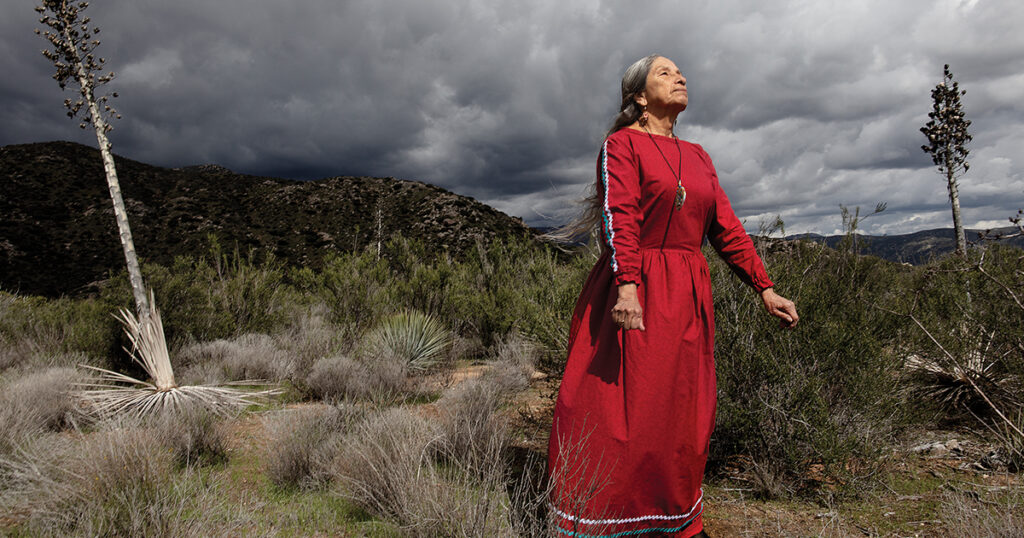
In 2012, Matika Wilbur, a member of the Swinomish and Tulalip tribes of Washington, launched Project 562, her effort to photograph the 562 federally recognized Native American tribes in the United States. (That number has since grown to 574.) She envisioned the project as a national endeavor to correct historically inaccurate, harmful representations of Indigenous people. Almost a decade later, Wilbur has traveled to all 50 states, and Project 562 is nearly finished. Its many focuses have included Native American identity as related to land, especially in the context of displacement; two-spirit and other LGBTQ+ identities, and rematriation, an Indigenous feminist movement. Noting that in many modern American institutions, Native Americans are still frequently misrepresented—if represented at all—Wilbur encourages Project 562’s viewers to see and appreciate the complexity of Native American identity and intelligence. —Jayne Ross
Once I started understanding white supremacy and the impacts of colonization, I started to think, What does it mean to decolonize? I began photographing a lot of activists who are working to rematriate, and I sought out culture bearers who empower our communities. I hope our stories can help to create a new vision that includes an Indigenous future.
The Kumeyaay grandma in this photo is Virginia Christman. There are 13 Kumeyaay nations in Southern California, and across the border into Baja are another five nations. She is the mother of Ral Takook Christman, who is the leader of a prominent Bird-Dancing family. Bird Songs, or Ashaa Takook, a traditional form of storytelling sung at ceremonies or large gatherings, are essential to transmitting Kumeyaay spiritual values and teachings. In the photo she is demonstrating the Bird Dance, and it is clear to me that her influence as a matriarch has deeply influenced her family and community.
I thought it was important to share that photo right now because there’s a lot of organizing and resistance among Kumeyaay people to stop Trump’s wall from being built. In fact, this July, they stood in front of an area where a preconstruction blast was meant to happen and stopped the progression of the wall. I know for certain that the arbitrary U.S. border has deeply affected Kumeyaay relationality.


